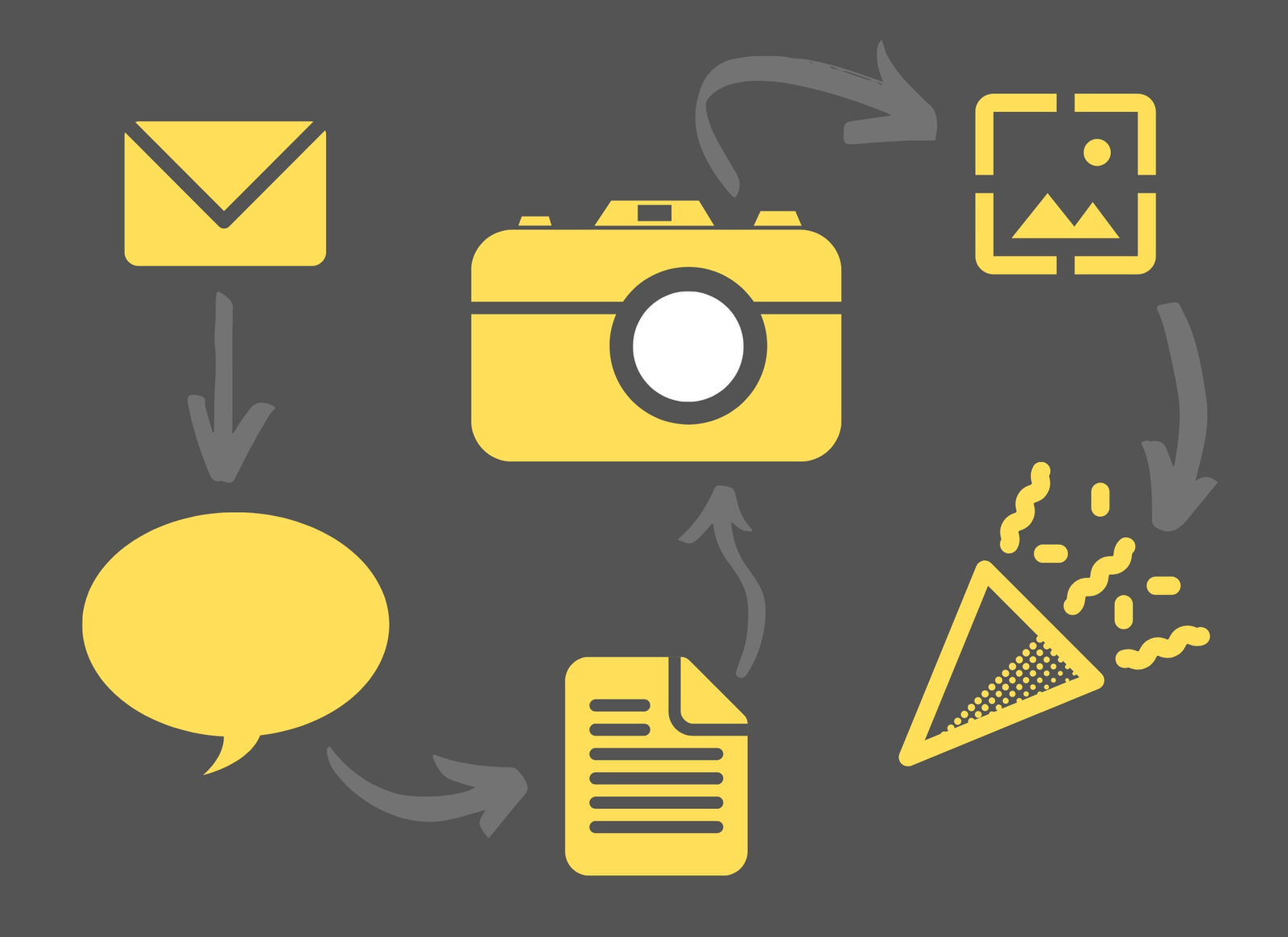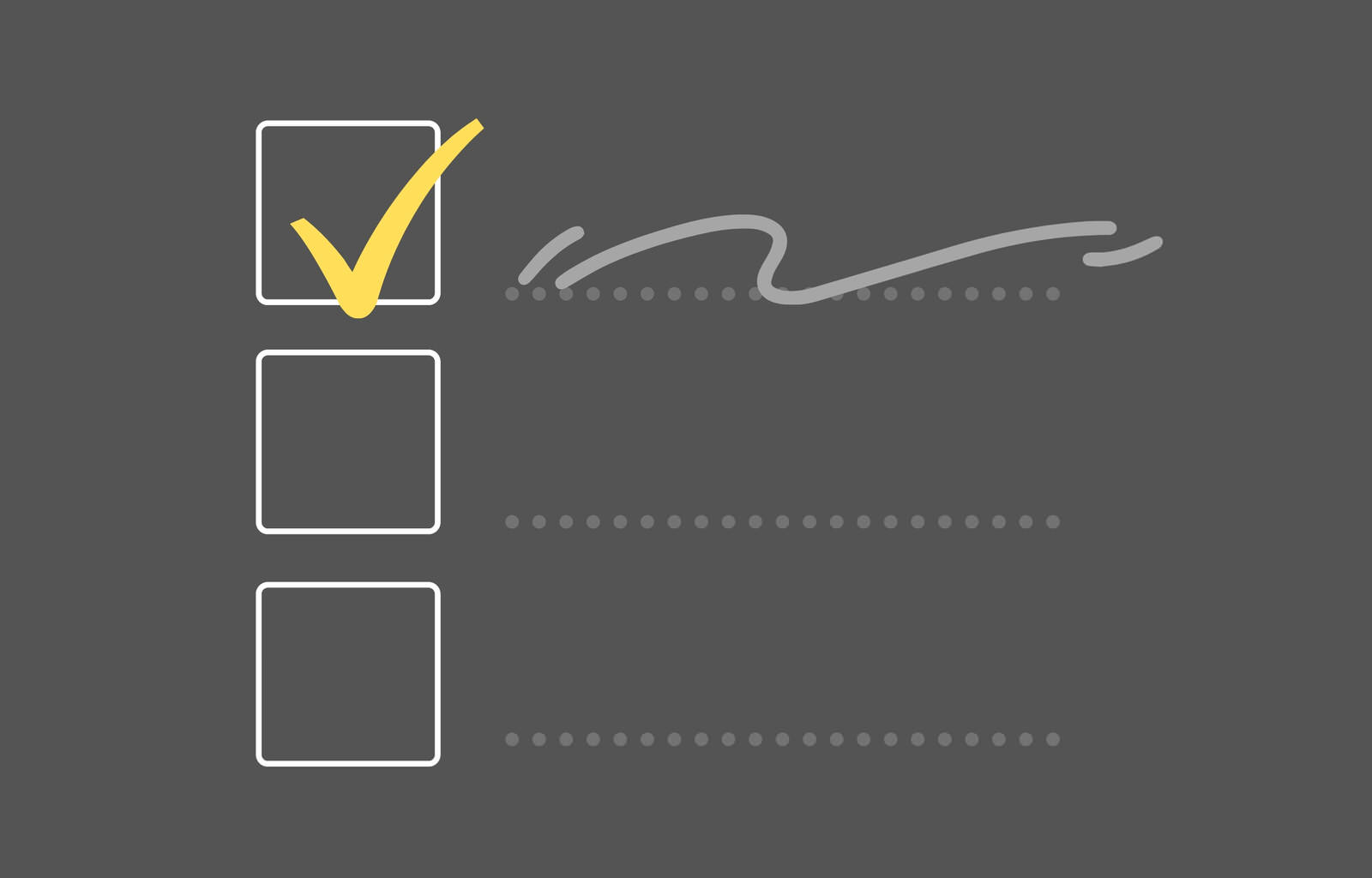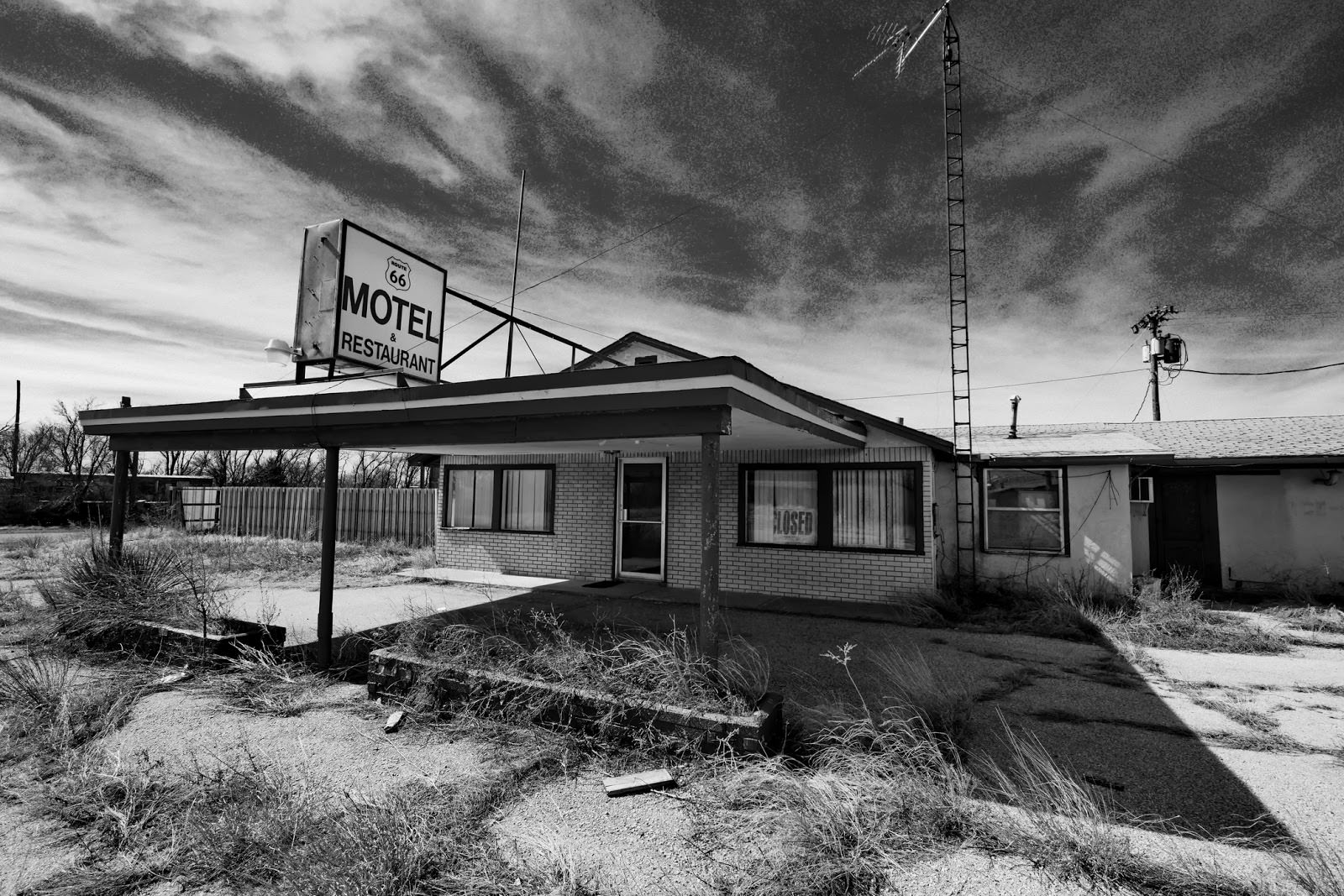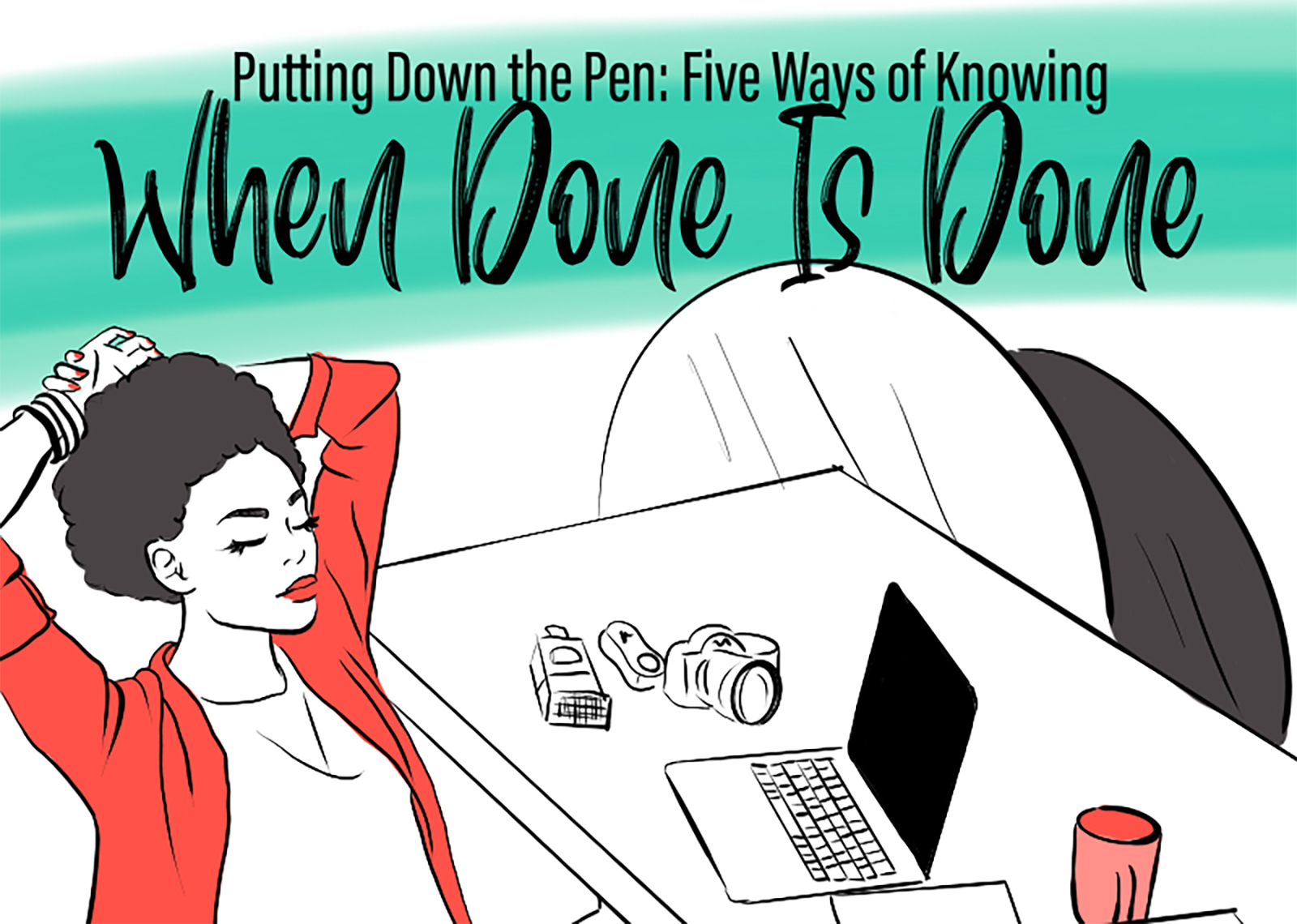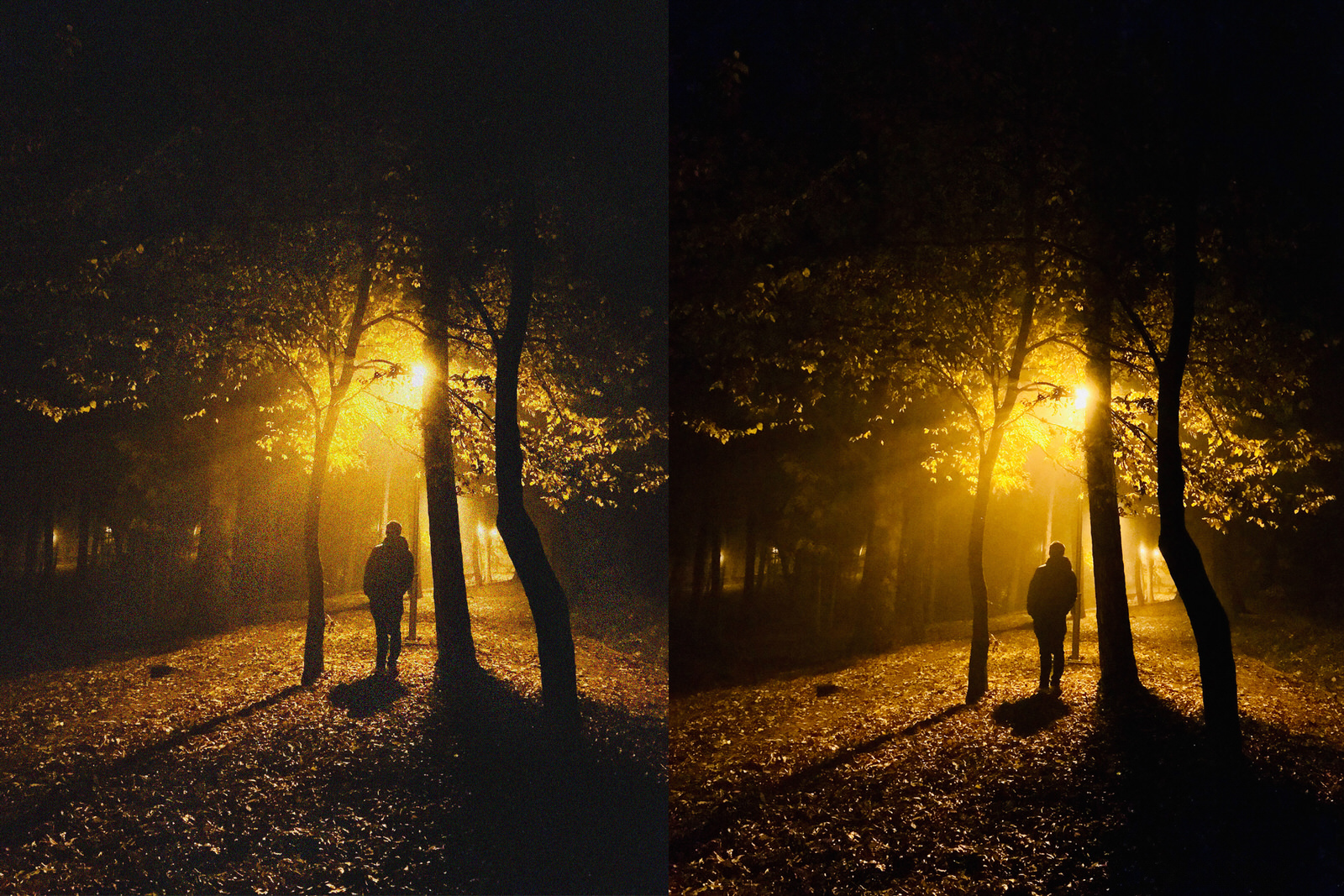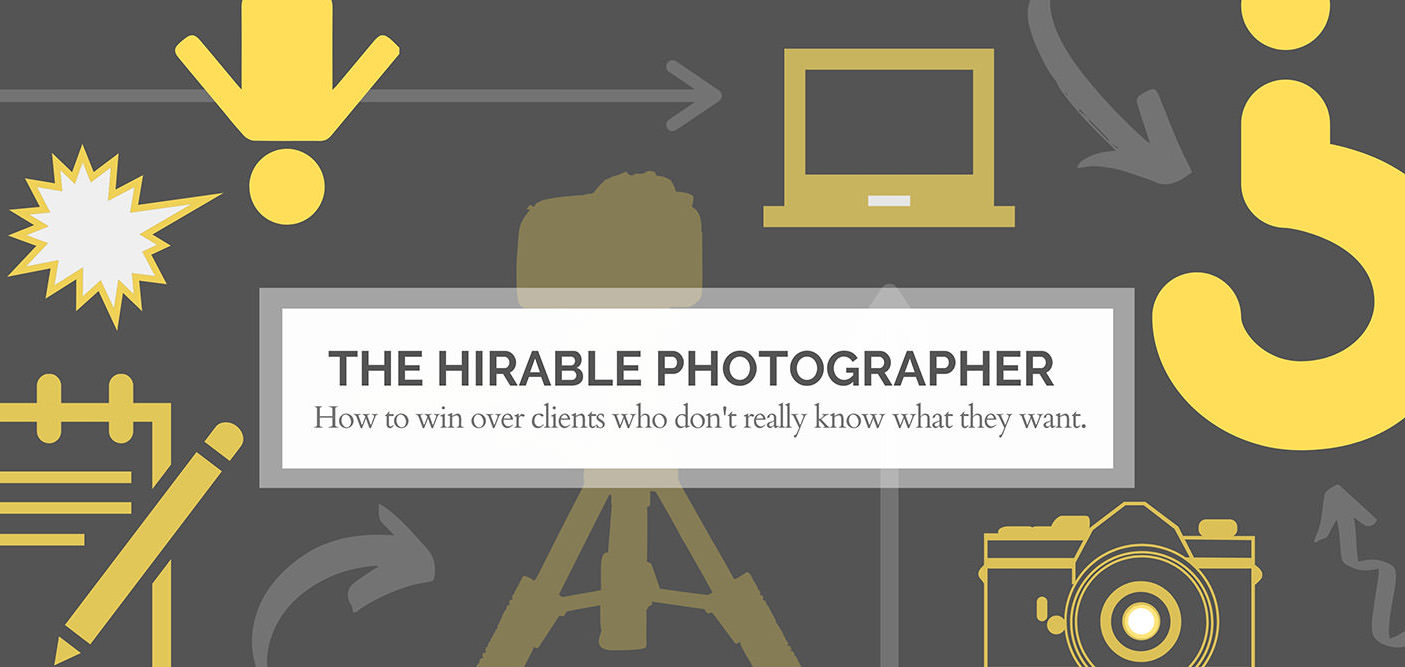
The Hirable Photographer: How to Win Over Clients Who Don’t Really Know What They Want
As photographers in the digital age, we often assume that our clients know quite a bit about our craft. It’s only when we really get into a project that we realize how untrue that is.
Difficult or indecisive photography clients get a bad rap, they really do. Photographers often take up the attitude that if a client is uninformed about how much their work should cost or how long it should take to create, it’s somehow the fault of that client. But with photo-hobbyists and semi-professionals everywhere they turn, playing by their own set of rules, is it any wonder your clients don’t know what to expect from you?
By setting yourself apart with a professional workflow and laying out clear expectations up front, you can turn many of these so-called “difficult” clients into your most loyal customers. Here we’ll cover three steps you can take throughout your working relationship to earn your client’s trust and create a mutually beneficial working environment.
Step 1: Winning Their Confidence
Have you ever encountered one of these clients during a first inquiry?
- The Expert – They already know everything about photography… they just want to make sure you know.
- The Pricing Police – Their last photographer didn’t cost nearly this much.
- The Human Questionnaire – They’ve got questions about their questions.
You may find clients like these difficult, but they aren’t acting out just to mess up your day. They’re doing it because they have a deep-seated fear of the unknown.
- The Expert is wary of signing on with a photographer who doesn’t know his or her stuff.
- The Pricing Police are worried about spending their hard-earned money wisely.
- The Human Questionnaire is terrified by how little they know about this big decision they need to make.
It’s your job to not only deliver a great end product but to develop a trust-based relationship with your clients that alleviates their fears. If you skip this very important step, you could be setting yourself up for failure before you take the first shot. Here’s how to lay the right foundation for a good working relationship:
Gauge Their Comfort Space
The best way to inspire confidence right off the bat is through your communication. Proofread your written communication, be respectful when you speak in real time, and respond promptly either way. Then take it a step further.
A photographer has to be good at finding what’s really important to a client, even when that client doesn’t entirely know himself. That extends to your manner. You’ll need to determine what behaviors will resonate best with each client while still remaining true to yourself and your brand. Will your earthy, laid-back portrait client be able to relax if you’re wearing a suit and using technical jargon? Probably not. And your stuffy corporate headshot client likely won’t have a lot of confidence in you if you show up in a pair of ripped-up jeans. Find ways to calibrate for each client’s comfort space that are authentic to your process.
Have the Right Business Tools
Every client you’ll ever have knows someone else who takes good pictures. There’s always a family member or friend who has a passion for photography and a top-of-the-line DSLR or mirrorless. They’re contacting you because they want a professional photographer, and that’s about a lot more than just your camera. You’ll need some business tools that set you apart from the hobbyists they know.
“Paperwork”
Okay, so most (or all) of your paperwork will probably be digital, but don’t expect your client to remember everything from the mile-long email thread you share. Having a dedicated document (even if that document is actually a PDF) for each step of your interaction gives them blocks of related information they can refer back to at their own leisure.
When you’re trying to convert a lead, a well-laid-out proposal will show that you’ve really put thought into their project.
An itemized quote is always a nice touch, even if you’ve gotten the verbal okay from your client.
After you’ve set terms, a welcome packet is an easy way to lay out your process in a way the client can easily understand. You can talk about pricing, a timeline, and how many images your client can expect from you. When you receive an inquiry, you can include this in your response so your client feels comfortable right away, without having to ask a single question.
A contract, of course, is especially important. We’ll touch on this more in a bit.
A CRM
To keep track of where you are in all of your different projects, you need a clear workflow. A Customer Relationship Management system (CRM) will help you set up a pipeline for converting leads into clients and completing their projects. A good one will keep track of contact information and do at least some modest automation for you such as sending out templated emails when your clients make an inquiry, digitally sign their contract, or are ready to view a gallery.
If you’re just dipping your toe into the CRM space, try Dubsado. You can use the full-featured version for free for up to three clients.
Good Design
Even though you’re a photographer and not necessarily a designer, your clients will be judging all the visual elements of your business. If you’re using plain text and no design in your communications, there’s an easy fix that will instantly elevate your brand.
Canva has a whole library of free templates that you can use to create a sort of brand stationery for yourself. This can include your contracts, that welcome packet we discussed earlier, and maybe even a quick thank you note to send out when you wrap up a project with a new client.
Need a starting point? Choose three to five colors to use for your brand. Know the hex codes for your colors so you can add them easily to your web content and documents.
A Solid Web Presence
Your client’s first impression of you will most likely come from your social media or website, so put some real thought into how you present yourself online. Manage your portfolio regularly, post helpful, engaging content, and keep all the info up to date. Don’t forget to keep the look of your site cohesive with the design on your documentation.
Be Clear up Front
Remember how difficult or indecisive clients fear the unknown? If you aren’t 100 percent clear from the get-go about what it’s going to be like to work with you, you’re basically opening the door to that great unknown and pushing them right through it.
Instead, give your clients a roadmap and let them open the door themselves. Know your process and be ready to describe it in the early stages of a working relationship. Be able to talk about your timeline, the order of events, what you need from them at each stage, and how they will pay (and when).
Be ready also to explain some lingo. Clients with limited photography experience can’t be expected to know what a RAW file is or why you don’t want to turn it over to them. They can also be easily confused by terms like “post-processing” and “color correction”. The more you can help them understand, the more comfortable they will be. (If you’re really good, you might even consider attaching a glossary of common photography terms to your welcome packet.)
Know How to Justify Your Rates
You’ll probably experience some push-back on your pricing at some point, and that’s not necessarily a bad sign. Clients who don’t know what goes into your job won’t value your time the same way you do. It’s up to you to educate them, so be sure you understand how your own pricing works. Then attack on all fronts:
- Explain the process. Discuss equipment and software costs and why you are a better choice than the photographers charging less.
- Use social media to educate your clientele. Do a behind-the-scenes Instagram story. Create a YouTube video that walks through your process. Make yourself an authority on the topic by writing guides and tutorials on your blog, maybe even an eBook!
- Give them excellent customer service. It will make them feel like you provide more value. (Because you do!)
Step 2: Forming a Plan
A lot of photographers make the mistake of going full-tilt when they’re trying to land a client, then putting that new client on the back burner as they pursue the next one. But to stay on the good side of word-of-mouth and keep your clients from getting cold feet, you need to keep the momentum going.
See What They’ve Got in Mind
A shared Pinterest board (or other image library) gives your client a place to share examples that resonate with them. Your more analytical clients probably won’t be able to describe what it is they’re seeing in their heads, but they know it when they see it. They’ll feel more confident when they know you’re actually seeing what it is they want. (Just make sure to share legally.)
Set Up a Pre-Shoot Consultation
This is where you’ll move past the parameters of your project and into the vision of it. It’s important to speak with your client in real time if possible. It just makes it easier to gauge their reaction to things like shot lists and mood boards. A conferencing platform like Zoom will allow you to screen share during an online consult, so you (and they) can pull up and share ideas from a computer or device as you go.
Come extra prepared to this session with visual aids and lots of suggestions. The idea is to help your client articulate what a successful end product looks like to them. It’s a narrowing down of broad strokes, and the feel of this meeting is vital to keeping their trust in you nice and solid.
Not to mention, if they leave this meeting feeling confident in your abilities, they won’t feel the need to oversee every detail from that point on.
When you walk away from the consult, you should at least know:
- How your client plans to use the images – This will help you plan for things like specific aspect ratios (helpful if they’re posting to social media).
- What your next step will be – You should have all the information you need to get started. If your client needs portraits a month from now, you can start scouting for locations. If you’re shooting food photography, you should know how to make or obtain the dish you need to feature.
- If something is a deal-breaker for your client – This could be a color scheme thing, a file type thing, or a timeline thing. Anything that’s going to bug your client, you need to be aware of.
Give Them a Taste of What You’re Working On
Don’t leave your client in the dark. They’ve probably paid a sizable deposit, and they want to know it was well-spent. It’s always a good idea to send them a test shoot (for product photography) or sneak peeks (for portraits) to set their minds at ease and give them the opportunity to provide feedback before you’ve dedicated hours and hours to a certain look.
In the event of, say, a wedding, you can tweak your editing if the sneak peeks don’t get the response you hoped for. A product photography shoot can be completely redone if necessary. It will be up to you to set boundaries about how far you are willing to go. After all, by this time you’ve explained very clearly what your client should be expecting.
Even if all is going swimmingly, it’s still good form to send regular updates on your progress. You spend all of 30 seconds firing off a concise email when you’re moving to the next stage of the process. It’s all about minimizing the unknown.
Step 3: Seeing It Through
It’s not over until it’s over. Sadly, it’s possible for a client to be enthusiastic in the beginning and on board during the planning phase, yet completely dissatisfied with the finished product. All you can do is prepare, execute your work according to plan, and try to end every project on a good note.
Hold Up Your End of the Bargain
Don’t leave any room for debate about your job performance. Show up on time, meet your deadlines, and respond to communications. If you do happen to run into any issues, update your client ASAP. They won’t be happy, but you’ll have a better chance of finding a solution.
Schedule a Post-Shoot Consultation
Turning over your images to a new client should really be more of a presentation than an exchange, especially if you’re hoping to sell prints. Make it an experience for your clients. Walk them through their photos on a nice screen. Cull your work down to a manageable number to look over without overwhelming your client. Leverage yourself as a consultant by suggesting why certain images would work best for a specific purpose. Help them put together a collection that they will be truly happy with.
If you work with a brand on a retainer basis, there may not be a need for this after the first couple of go-arounds. However, a post-shoot consultation after your first project together will provide valuable insight into your client’s preferences.
Use a Contract. Always.
Though a contract does make you look more official and trustworthy, it’s really more of a fail-safe than a solution. There will always be clients who just aren’t happy with that they signed up for, once they actually get it. On a more benign note, there are a lot of clients who just don’t understand photography. In both cases, a contract is something you can point back to and say, as tactfully as possible, “I’m sorry if you don’t like it, but this is exactly what you agreed to.”
Have a Plan for Dealing with Dissatisfied Clients
Maybe you’ll never run into one, but you’ll definitely need a plan if you do. Unfortunately, there’s a lot of gray area in how to deal with this. Ideally you would use some variation of that last line in the previous section, but that’s not always practical. These days you run the risk of getting plastered across social media. For established photographers this may be an annoyance more than a concern, but if you’re still trying to build a reputation, it could be devastating.
So talk yourself through all eventualities. At what point would you be willing to relax your refund policy (or should you guarantee your photography up front)? Is there ever a case where you would turn over your RAW files? How will you respond if an unhappy client attacks your good name on social media? (Hint: firing back at them on a public forum in the heat of the moment is not the answer.)
Accept the fact that by standing firm, you will very likely only make your dissatisfied client more dissatisfied. Be prepared to learn from the experience and take that knowledge with you to the next client. Most importantly, do your due diligence throughout the collaboration so that you can rest in the knowledge that you did your very best work, even if your client did not appreciate it as you hoped.
Clients who don’t know what they want can be the best kind, if you earn their trust and respect their perspective. It’s all about demonstrating your professionalism and convincing those clients that you care about their project as much as they do. Now that you know some concrete ways to inspire their confidence, it’s time to go after them!


